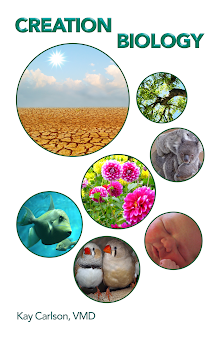I'm not going to keep from a little philosophy of my own, (opinion is the better word), but I want to add the science and math that go with the ideas. That keeps the arguments more focused, I think. And it is possible for anyone to understand. Creation biology is a reasonable evaluation of experimental evidence .
An important author of genetic biology is Eugene Koonin. Dr. Koonin has written many articles from his position at the National Center for Biotechnology Information (NCBI). One of these, along with two other authors (Aravind and Kondrshov), is from the journal Cell, 101 (6), 573-576, June 9, 2000. The article, "The Impact of Comparative Genomics on Our Understanding of Evolution," is about comparing genes of different kinds of orgnisms and is very important. The public had been told by evolutionists (in general) that multi-celled animals had evolved from single-celled animals. Two main types of cells are called prokaryotic (one-celled bacteria are like this) and eukaryotic (cells which make up plants and animals with multiple cells). The NCBI picture shows the two kinds. See "Cell" in Wikipedia HERE for further information.

The article shows that that this assumption about evolution was wrong. Dr. Koonin and the rest evaluated findings from complete sequencing of genes of bacteria, archaea (other single-celled organisms) and yeast and discuss them in this article. They compared the proteins to see how closely related they were on the microscopic level. They found there were great differences--too great to have easily evolved one from another. The question eventually relates to how the gene affects the way the animal or plant turns out. Dr. Koonin had this to say near the end of the article:
More generally, what we realize with due humility from our first forays into complete-genome-scale comparative genomics, is that we do not truly understand the connection between the genome and the phenotype of an organism.The phenotype is the outcome, or form, of the animal. I'm not saying it is Eugene Koonin himself who told everyone that eukaryotes evolved from prokaryotes, but scientists in general. But through the comparison of whole genomes, not even possible before 1995, his group shows that this particular evolutionary assumption is wrong. I admire Dr. Koonin for saying what he did.






No comments:
Post a Comment
Comments are moderated. You do not have to agree, but please be civil. Thanks for your interest.